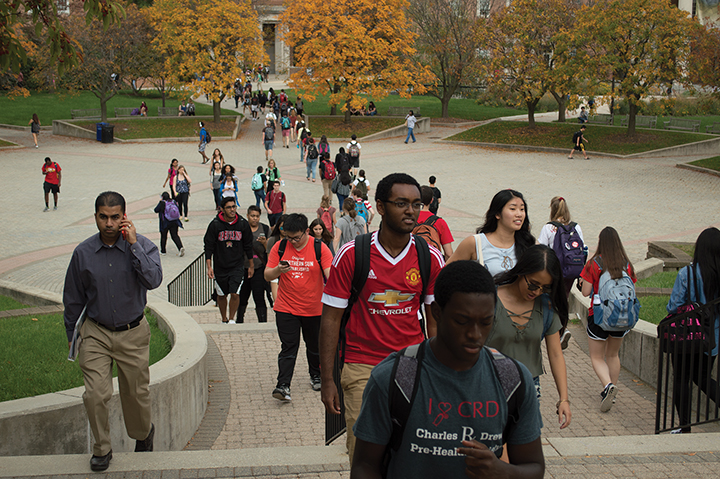Views expressed in opinion columns are the author’s own.
University of Maryland President Wallace Loh either doesn’t understand this university’s diversity problem or refuses to fully acknowledge it. According to a recent study by The Hechinger Report, black students accounted for 36 percent of Maryland high school graduates in spring 2015. The same year, they made up only 12 percent of this university’s freshman class.
[Read more: UMD’s black student enrollment trails black high school graduate rates in Maryland]
This 24-percentage point disparity is a serious stain against this university’s reputation for diversity. It demands serious reconsideration of the issues facing minorities on this campus, and requires substantive action to address those concerns.
Instead, Loh chose to mount a lukewarm defense of the status quo. Loh noted that “between the number of people and the person admitted, there’s something called an admissions process.” He also argued that Supreme Court decisions on affirmative action prohibit enforcing a target percentage of minority students. While Loh is technically right, his statement conveniently dodged the substance of the data.
The issue isn’t whether the administration should uphold some form of a black student admissions quota. The astonishing difference in diversity between high school graduates and this university’s freshman class makes it clear that there is no shortage of qualified black students. While the causes of the discrepancy are complex and numerous, a large portion of the blame rests on this university. Loh’s comments fail to address long-standing racial barriers.
Fortunately, this university has an extensive online resource tracking racial diversity across colleges and majors. At first glance, the student population appears to be growing increasingly diverse. White students made up about 50 percent of the undergraduate class in the fall 2017 term. Underrepresented minorities — which include Native American, black, Hispanic and Pacific Islander students — were more than 22 percent of the undergraduate population.
But that apparent diversity isn’t the full story. Underrepresented minorities are heavily concentrated in some fields yet nearly excluded from others, meaning the university’s overall diversity does not always carry into the classroom. The perception that some colleges and majors don’t welcome minorities may contribute to many students’ decisions to attend other universities.
Two of this university’s largest programs — the computer, mathematical and natural sciences college and the engineering school — are also among the least inclusive. The two programs are made up of only about 17 and 15 percent underrepresented minorities, respectively, in fall 2017.
CMNS’ lack of diversity is especially striking. Underrepresented minorities’ share of the college has remained roughly steady since the early ’90s. This is despite the program’s meteoric growth since 2010. That implies that the college’s growth is simply drawing more of the same kinds of students, rather than expanding opportunities to underrepresented groups.
There is also some good news. The public health school’s student body is composed of more than 35 percent underrepresented minorities, and they make up 27 percent of the arts and humanities college. While the progress made by the more inclusive programs is commendable, it does not excuse the lack of underrepresented minorities in other fields. Rather, it shows that those programs are failing to create an environment friendly to diversity.
When questioned about the report, Loh said education is the “great equalizer” and “the pathway to social and economic opportunity.” But he can’t claim in good faith that this university’s education is equalizing or opening opportunities when students belonging to underrepresented minorities are concentrated in a few programs and nearly absent in several others. Instead of making excuses, this university needs to investigate why some of its programs systematically fail to attract diverse students. If Loh wants diversity, he first needs to admit that his campus is anything but equal.
Nate Rogers is a freshman physics major. He can be reached at nrogers2@terpmail.umd.edu.



